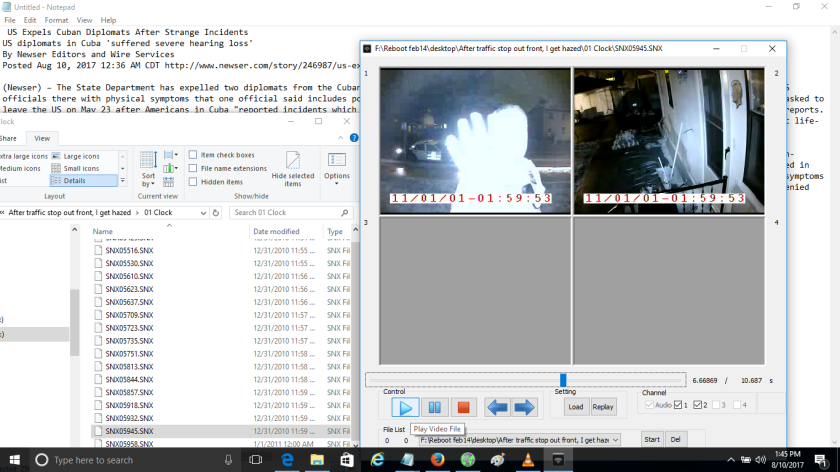In the current Hegelian insanity and it’s accompanying institutional sociopathy that has engulfed western nations, one must remember those who came before us as canaries in the “social sanity” mine.
When 9/11, 2001 “occurred” (…), it cannot be forgotten that the lists began. And of all the people one might expect to be on a list, such as Saudi bombers who were able to enter and exit the country freely as they plotted; or dual nationality “world citizens” with no allegiance to America or the Constitution with bankrolls full of cash, or maybe even Tim Osman, the names that struck me as quite ineptly listed were Cat Stevens the song writer, and Bobby Fischer the chess Grand Master.
While it is easy to see that Stevens could possibly have been listed for the oddly titled “Tea for the Tillerman,” and the fact that he found a happy home in Iran despite many other Jews decrying (falsely) that Iran doesn’t welcome Jews, Bobby Fischer was stranded in Iceland as a threat to “America.” Both of these men, it may be remembered, were outliers in the narrative fiction storm that was created around that time by propaganda agents who literally, figuratively, and metaphorically targeted these men.
Related Story: Cat Stevens, aka Yusuf Islam, Muslim convert and game changer, at home in Iran
It cannot be forgotten as well that Fischer was an inter-generational target of stalking and harassment, a definite and proven target of espionage and mind control operations, and then, finally slander and defamation (let me know if you start seeing any patterns here, as obsessions with patterns or coincidence can indicate schizophrenia or delusional thinking). The particular slander was that he had a temper, and that he was “likely mentally ill.”
Here below is a bit of that- and see if you can spot OTHER patterns that fit into the OGS dialectic:
In a sequence set during his childhood in Brooklyn, we learn that he grew up in a milieu that idealized communism and that led his mother to be placed under FBI scrutiny. From an early age, chess was Fischer’s retreat and his calling. He was thoroughly convinced that he could be the best player in the world at a time when the Soviet Union dominated chess. Eventually his target became the reigning No. 1 player, Boris Spassky (Liev Schreiber).
The Soviets had a huge apparatus supporting their chess program, and there was nothing like it in the United States. Fischer is soon contacted by a mysterious lawyer (Michael Stuhlbarg) who says he represents unidentified people who would consider it a Cold War victory to see the Soviets humiliated by the American genius. Money becomes available, and Fischer begins his speedy rise through the ranks, with a meager support team: the lawyer and a priest, the Rev. William Lombardy (Peter Sarsgaard), a chess player of considerable talent himself.
Fischer is convinced that the Soviet chess juggernaut uses underhanded tactics to win. He begins issuing demands: He wants a better hotel and more money, and demands that the press be kept at bay. Lombardy has known Fischer for a long time, and fears for the young man’s mental condition. The climax of the film is a war of nerves between Fischer and Spassky, culminating in the sixth game of the 1972 match, a game still revered in the chess world.
At one point, Fischer demands that the match be moved to a pingpong room in a basement, away from spectators and reporters. That’s the mildly comical side of Fischer’s obsession — much sadder is his destroying his hotel room in search of Soviet listening devices. Sadder still is that he begins to wonder if the lawyer and priest, stalwart supporters, are really working for the other side.
I have highlighted in the text above a few words and phrases which, taken together, virtually explain OGS, in this one case alone, which I will return to at the end of this post.
So, let’s take a look at the claim that Fischer had a “ mental illness” in context to what is known, and real, stressful and harmful to ones health, and ask the question: which came first, the trauma and the harassment, or the “mental health” issues, which are no more an indicator of that individuals mental health than it is an indicator of a society in Constitutional free fall, with the “targeted individual” being symptomatic of the wider disease of institutional sociopaths who operate in secret and with impunity.
So, the issue of stigma and official source gas-lighting is a major factor in OGS, but also, that “stigma management” plan frequently implicate the exact social forces that seek to compromise a persons personal integrity for the “use” of those same social forces.
In the case at hand, OGS, where individuals are stigmatized by larger institutional corruption of personal liberty, and sociopathic elements in government agencies or offices, and those colluding with psychology to create “narrative,” we can view the deeper process of stigmatization through official gas-lighting from a number of angles:
1) FBI CVE programs where psychologists leverage people for the use and abuse of their ‘right to be left alone’ against societies desire to use a person’s knowledge or connections
2) informant entrapment and Organized gang stalking, Scott Crow, disinformation and informants.compromise operations
3) multiple actors who use a person as HUMINT against their will, or otherwise attempt to infiltrate that individuals “mind” an use them for their own purposes through the use of drugs and other inducements
4) when tribal religious narratives and other conflicts arise such as the Hegelian Dialectic versus Democratic and/or Constitutional rights
5) when institutional, social, or corporate interests seek to use a person as a tool of propaganda dissemination-as “human vessels of propaganda dissemination.”
6) when a person is in fact being followed and attempts are made to control that person’s thought processes, social connections, or otherwise compromise their abilities.
7) offical denial of such nefarious practices, which de-legitimizes the complaint, and foists the onus of proof on the individual with often crushing results.
So, much as we see with our nation’s current love affair with torture, no touch torture, and a denial of due processes at every level of government, law, and society, we see also that it is more likely than less likely that what we see with Fischer and Steven’s isn’t mental illness at all, but rather, that targeted individuals suffer from harassment and defamation as a tool with which others seek their collaboration or compliance-and the mental illness is in fact just a way to “hook” or otherwise ensnare an individual into unwanted dialogues, and thus, another lie heard round the world.
So, just for fun, here is a string of words taken from the highlighted portions of the text above- and see if you can spot any “patterns:”
communism FBI scrutiny a huge apparatus War genius Money underhanded tactics fears for the young man’s mental condition pingpong a basement listening devices lawyer priest, stalwart supporters, are really working for the other side (his mother).
Now, I will encapsulate the entire OGS dialectic, without the “noise” of those who are swept into it, and who definitely suffer from “mental illness,” from those who are indeed targeted at many levels, for many reasons by intelligence circles, relligious cults, social mechanisms, and the psychopaths amongst them:
Whereas once communism drew FBI scrutiny a huge apparatus has been built to foster neverending War and wage constant assaults on genius that mocks it, seeking to use it for it’s purposes. Money and underhanded tactics create fears and then false narratives of concern for the young man’s mental condition in a pingpong effect of causing one to doubt the virtue or even the value of the current society and it’s plainly unethical basis. And this, as we frequently hear the FBI, and other’s online discrediting individuals with the slander that they “live in their mother’s basement,” when in fact their practices are destroying our ability to maintain privacy or even rational thought when internet listening devices are on every switch, and every connection. The simple fact of OGS is that institutional practices of secret processes, secret courts, secret laws, and secret decisions have denied even consultations with a lawyer and the ineffective false religions conspire to replace the priest, the rabbi, the therapist, and even stalwart supporters, with rats and snitches that are really working for the other side.
So-on that note, I ask you: was Fischer insane, or mentally ill- or is mental illness itself a sort of ritualistic slander practiced upon those who resist the hidden brutality of individual co-option by the state and it’s hidden apparatus and hidden practitioners?
But Cat Stevens, we know with certainty, is nuts. I mean- look here below at his paranoia expressed in a horrifyingly foreboding and apocalyptic lyric which exhibits all the features of classic narcissism and delusional grandiosity- as if the moon only follows HIM! Hmmmph. Self centered bastard.
” I’m being followed by a moon shadow, Moon shadow moon shadow.” And look where he ended up trying to shake a tail.
And of course, there were his terrorist sentiments that kept young Jewish camp kids all happy and dreaming of the day the Kabbalah would come to fruition on “one” earth, led by the Talmudic promise of the slaughter of all thine bad guys, and all of the foreskins would grow back, and everyone would pronounce “challah” correctly:
“Oh I’ve been smiling lately. Dreaming about the world as one. And I believe it could be, some day it’s going to come.”
And then, we see his paranoia expressed as a fear of werewolves, and comedy, as well as a peek into the mind of a dangerous and controlling and uncompromising religious zealot who refuses to let other’s use his work in comedy. Bastard- these conversos are messing it up for all of the “good guys,”and messing up the pure, Abrahamic bloodine!
-
Stevens, now known as Yusuf Islam, considers this his favorite of his old songs. It’s one of the songs that convinced him to release a Greatest Hits record of his work as Cat Stevens. He felt its uplifting message could help people.
-
Director John Landis wanted to use this song in his 1981 horror comedy An American Werewolf in London. The film featured a number of songs with “moon” in the title (“Moon Dance”, “Blue Moon”, etc.) but Stevens, who had recently converted to Islam, refused permission because he did not like the subject matter of the film
Related: Yusuf Islam’s brother converted to Judaism



